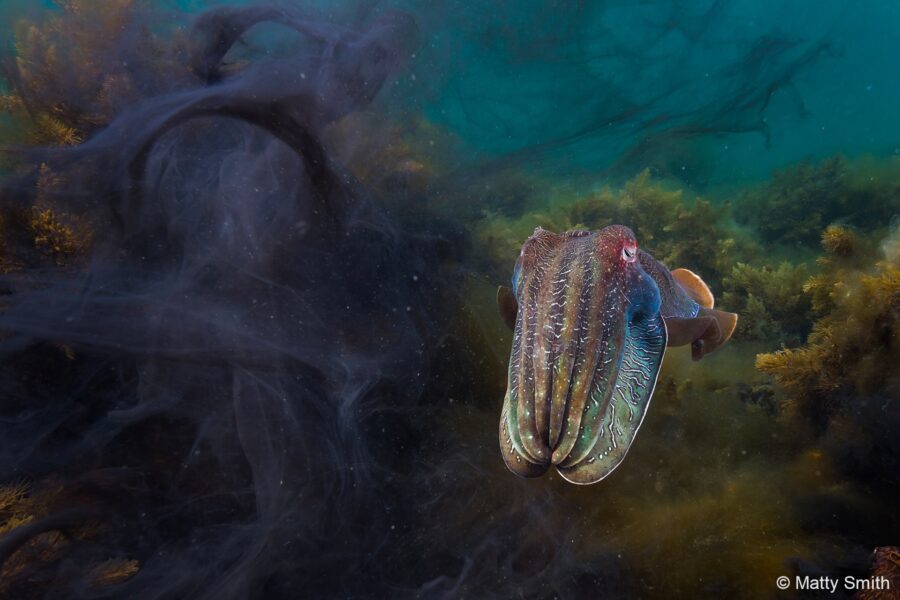The story behind the photo: ‘Aftermath’ by Matty Smith

Matty Smith was recently crowned winner of the Animals in Nature category in the 2023 Australian Geographic Nature Photographer of the Year (AGNPOTY) competition.
His winning image, titled Aftermath, shows a male giant cuttlefish (Sepia apama) left in the aftermath of a fight between two other males, with ink still in the water, and still displaying his vivid courting colours.
Can you tell us the back story of this photo?
It’s a single male Australian giant cuttlefish left in the aftermath of a skirmish between two other, larger male cuttlefish. When I first arrived on the scene there was a female surrounded by the three males, who were all competing for her attention with their colourful skin displays. Suddenly, the two large males got into a grappling match, inking, and rolling out of the scene like wrestlers. The lone female fled and left the single smaller male in the aftermath of the scene, still displaying his mating colours.
What is your connection to the subject matter?
Cephalopods (cuttlefish, squid, and octopus) are up there as one of my favourite group of animals. Their apparent intelligence and interactions with me as a diver make me wonder who is watching who sometimes. They seem very aware and interactions with them can be mesmerising. Also, their ability to change the colour, pattern, and texture of their skin in the blink of an eye is just mind-blowing.
Where is it taken, and what led you to this site?
It was taken at Point Lowly, near to Whyalla in South Australia. Every year in the months of June to August the largest aggregation of giant cuttlefish known to man happens. It’s a huge breeding and reproduction event in which hundreds of thousands of these giant cuttlefish gather in the bay and around the point in shallow water.
Were you unexpectedly there or had you planned to cover this moment?
Yes, I knew about the breeding aggregation at Point Lowly, this was taken during my second season shooting there.

What are the technical challenges of photographing this kind of scene?
Being underwater adds a significant list of technical challenges beginning with your own safety and limitations of air supply, cold water, currents etc. From a photographic point of view the challenges are lighting and correct exposure in water. But most of all, for this particular shot is was the split second, instinctive decision of either following and shooting the action of the two other males fighting or staying with the lone male framed by the black ink. Nine times out of 10 I would follow the action, but in this instance, I chose the latter and got a great shot. It was explosive action that was over in seconds.
How did you prepare to take this image?
Every dive before this is preparation in some way. It comes through time spent with a particular species and learning it’s behaviour and the likelihood of various outcomes and trying to be ready for them!
Did you have special equipment?
Underwater photography has a wealth of specialist equipment such as the waterproof camera housing and underwater flashes to illuminate colour. Additionally, of course, there is the dive equipment and experience using it which is also necessary.
Have you covered this topic/subject before?
Yes, this was my second cuttlefish season at Point Lowly. I have accumulated many images of various cuttlefish behaviour; fighting, mating, feeding etc but nothing quite as evocative as this shot from a creative compositional point of view.
Why is this form of photography important to you?
I really enjoy and feel it’s very important to show people the treasures we have in our oceans, how fragile they are and the importance of protecting them. I like to use my skills as an underwater photographer to try to amaze and educate.

